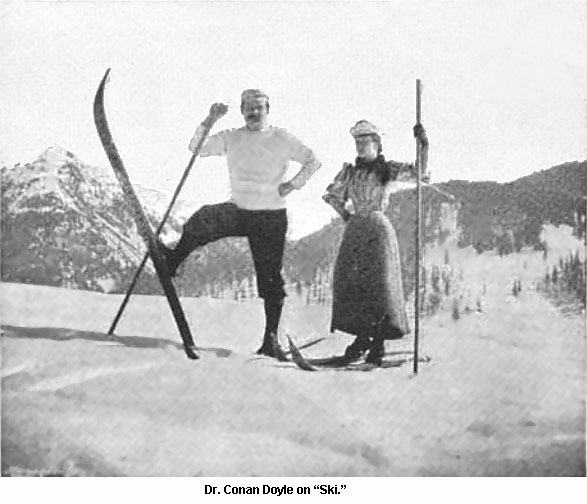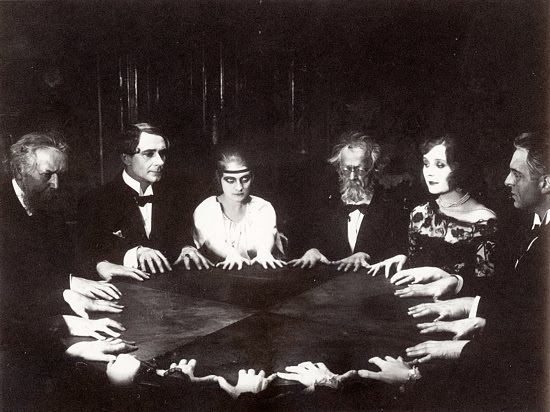Sherlock Holmes’s creator Sir Arthur Conan Doyle embraced football, fairies and public feuds. Here are things that you may not know about the writer.
1. Doyle was one of the earliest motorists in Britain
He reportedly bought a car without ever having driven one before. In 1911, he took part in the Prince Henry Tour, an international road competition organized by Prince Henry of Prussia to pit British cars against German ones. Doyle paired up with his second wife, Jean, as one of the British driving teams.
2. Conan is not part of his surname
It is, in fact, only one of his two middle names. He is Sir Arthur Ignatius Conan Doyle. Shortly after he graduated from high school he began using Conan as part of his surname.
3. Doyle was on the same cricket team as ‘Peter Pan’ writer J.M. Barrie

They also worked together on a comic opera, Jane Annie, which Barrie begged his friend to revise and finish for him.
4. He could have discussed Dracula and Treasure Island with their authors
Doyle was also friends with Bram Stoker, and Robert Louis Stevenson was a fellow classmate at the University of Edinburgh.
5. He helped to popularize skiing
He not only liked cricket and football, but Doyle helped to popularize the winter sport. Following a move to Davros, Switzerland in 1893 (the mountain air was prescribe to aid his wife’s health), he mastered the basics with the help of the Brangger brothers, two locals who had taken to practising the sport after dark to avoid being teased by the townsfolk. Together, they were the first people to make the 8,000ft pass through the Maienfelder Furka, which separated Davos from the neighbouring town of Arosa. Doyle was also the first Englishman to document the thrill of skiing: “You let yourself go,” he said. “Getting as near to flying as any earthbound man can. In that glorious air it is a delightful experience.” Doyle correctly predicted that in the future hundreds of Englishmen would come to Switzerland for the “skiing season”.

Conan Doyle was the first to bring skiing from Scandinavia to Switzerland.
6. He was a goalie
Under the pseudonym AC Smith, the writer played as a goalkeeper for amateur side Portsmouth Association Football Club, a precursor of the modern Portsmouth FC.
7. Doyle ran for parliament… twice!
Doyle ran for parliament (representing the Unionist Party) once in Edinburgh (in 1900) and once in the Border Burghs (in 1906). Although he received a respectable vote both times he was not elected. In the 1900 general election, Doyle was defeated by CM Brown of the Liberal Party, who received 3,028 votes against 2,459 cast for Doyle.
8. Ophthalmology’s loss was literature’s gain
Arthur Conan Doyle set up an ophthalmology practice in London. Doyle wrote in his autobiography that not a single patient ever crossed his door. Although, the silver lining was that he could dedicate his time to writing.
9. He believed in fairies
Sherlock might have been a skeptic but Arthur Conan Doyle believed in fairies. Well, he was convinced by the Cuttingly Fairy photographs, the famous 1917 hoax. He even spent a million dollars promoting them and wrote a book, The Coming of the Fairies (1921), on their authenticity.

One of the Cottingley Fairies photographs, taken by Elsie Wright (15) and her cousin Frances Griffiths, which caused a storm in 1917.
10. And also believed in a number of mediums
But this came at the cost of his friendship with Harry Houdini, who at the same time was trying to disprove the claims of the Spiritualist movement.
11. Why he killed off his most famous creation?
Sherlock Holmes was far from being Doyle’s own favorite character and was killed off in 1893, only to be resurrected 10 years later after public demand and monetary persuasion. He had earlier told a friend: “I couldn’t revive him if I would, at least not for years, for I have had such an overdose of him that I feel towards him as I do towards pâté de foie gras, of which I once ate too much, so that the name of it gives me a sickly feeling to this day.” However, there may have been other reasons for the writer killing off his famous creation, as it happened in the same year that Doyle’s alcoholic father died in an asylum.
12. Doyle and George Bernard Shaw had a spat about the Titanic
After the Titanic sank in 1912, Doyle and George Bernard Shaw had a very public disagreement about the disaster. Doyle was outraged by the dismissive and bitter comments made by the playwright regarding the many acts of heroics that took place aboard the ship as it went down.
13. There’s a square in Switzerland named after him
The town of Meiringen in Switzerland was the location of The Adventure of the Final Problem, the novel in which the author killed the detective off. In 1988, a statue of Sherlock Holmes was placed in the village square, now named Conan Doyle Place.
14. Sir Arthur Conan Doyle didn’t just write mysteries, he actually solved a few
One of particular interest to him was The Curious Case of Oscar Slater – for the murder of Marion Gilchrist, a wealthy 82-year-old woman from Glasgow. Doyle applied the “Holmes method”, in which he uncovered new evidence, recalled witnesses and questioned the prosecution’s evidence. His findings were published as a plea for Slater’s pardon. It caused a sensation and there were calls for a retrial, but all this was promptly ignored by the Scottish authorities. The desperate and incarcerated Slater later smuggled messages out of prison and Doyle’s interest in the case was reignited. He wrote to politicians and used his own money to fund Slater’s legal fees. One politician, Ramsay McDonald – Britain’s first Labour prime minister – informed the Scottish Secretary that the police and the legal authorities had colluded to withhold evidence and influence witnesses. Slater was subsequently released from prison with £6,000 compensation but never shared it with Doyle.
15. Doyle died holding a flower
Doyle died on July 7, 1930. He collapsed in his garden, clutching his heart with one hand and holding a flower in the other. His last words were to his wife. He whispered to her: “You are wonderful.”
16. A séance was organized for him to make an appearance from beyond the grave

Following his death, a séance was conducted at the Royal Albert Hall. Thousands attended, including his wife and children. A row of chairs were arranged on the stage for the family, with one left empty for Sir Arthur. Even though he did not appear, there were many people in the audience who claimed they had felt his presence among them.
 Blog EBE English Book Education
Blog EBE English Book Education



